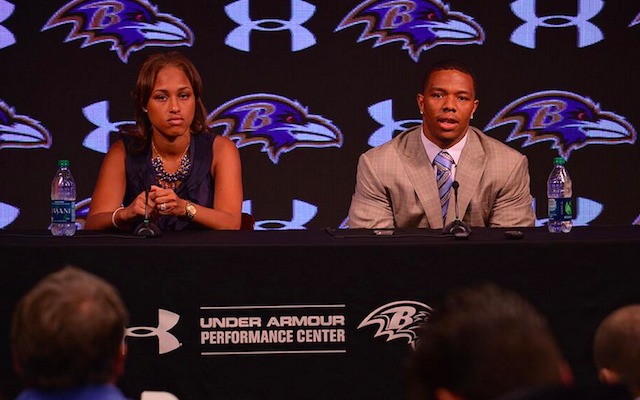Lately I’ve been reading about Ray Rice and the consequences he has been facing after being caught on tape knocking out his then-fiance, now wife. One CNN article questions whether he can be forgiven like athletes before him (Michael Vick, Tiger Woods) or if the public will harbor the anger in response to the visual image display abuse. Patrick Wanis, a human behavior expert, is quoted in the CNN article saying, “If we see the results of the beating, we react more harshly” and compares the case to Chris Brown and Rihanna’s abusive scuffle in 2009 (CNN). Wanis continues “When we see the bruises, the cuts, the bleeding, the scars, we feel a lot more pain, therefore we respond with a lot more anger” (CNN). Contrarily, Scott Eddi, also quoted in the article, says, “I personally think what he did is despicable … However, we are not his spouse. So ultimately if his wife has shown grace to forgive him … all we can do is support him.” The real question is does our ability to empathize through visual aids have more influence or the reluctance to stand in between people’s personal lives turn us toward forgiveness?
We are drawn to the visual. “A picture speaks a thousand words.” There’s a deeper connection when you can visualize the abuse compared to reading about the Ray Rice case. This study even shows that while spoken word can have the strongest effect on the memory, pictures come in at a close second, leaving written word in the dust. Visuals are crucial for getting points across, either through PowerPoint or through graphic design. Uday Gajendar on graphic design introduces “visual empathy”; by placing oneself in the view of another person they can get to know their everyday life better (in terms of images they are exposed to) and ultimately know the person better in order to appeal aesthetically to them (Gajendar). This creates a link between visuals and empathy, and empathy as seen in this Time study people react if others around them see grosser images than they do. Therefore, seeing the video of Janay Rice being knocked out may make a more powerful statement than simply hearing about it on the news. Will this motivate people to
This article focuses on Janay Rice’s forgiveness of her husband and looks into it as a consequence of an abusive relationship not progress in their personal relationship. It says, “The release of the video may have changed everything, but no one should have had to see it to understand that Janay’s defense of her husband says little about his guilt or innocence…victims frequently defend and stay with their abusers… By the time a man is beating a woman, he has gained some assurance that she will not leave him for it” (Marcotte). The same article links to WebMD’s “Domestic Violence” page that lists symptoms such as depression and isolation, safety concerns, shame, and conflicting emotions that could have motivated her to apologize insincerely. Should the public step in or should they accept her apology as a sign of withdrawal from the public eye?
Is her apology something that should draw the attention of the media in order to reach out and help discuss the issue of domestic violence everywhere or should empathy be disregarded and her family left alone?


I found this article really fascinating. I was always disturbed with the Ray Rice incident but no one really talked about it until the video was published. It goes to show that we don’t know what people go through. The apology seemed really sincere almost downgrading the whole situation but once the video was published we finally had a glimpse into reality. Although Ray Rice is suffering the consequences not everyone who commits these actions ever get caught never mind face repercussions. This was a really good reminder that people should be really conscious of what people might be dealing with and if we see any physically or emotionally abusive relationships we should say something.